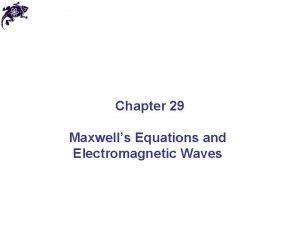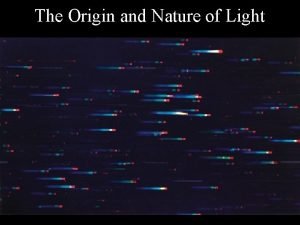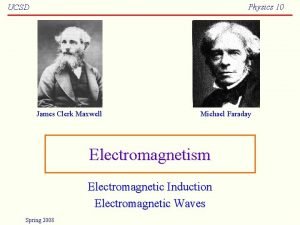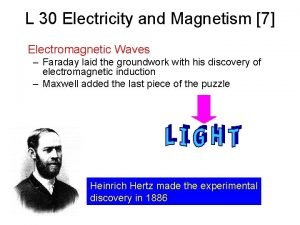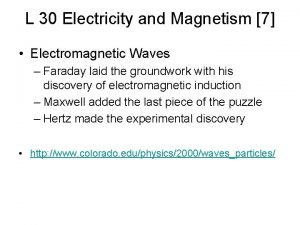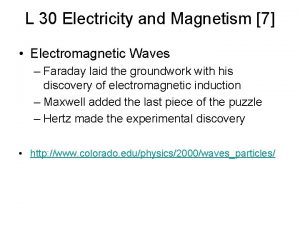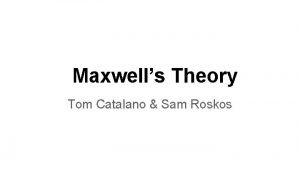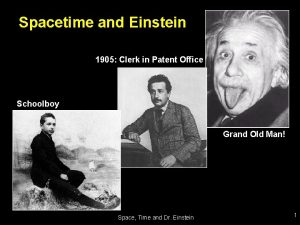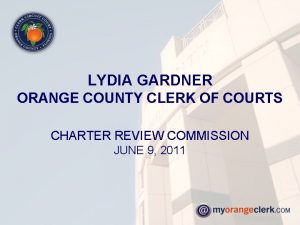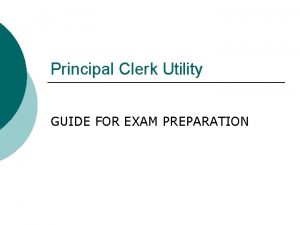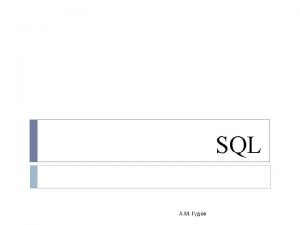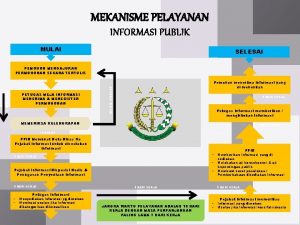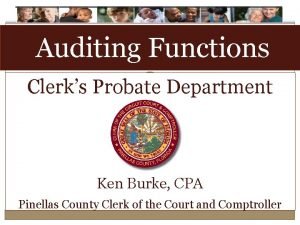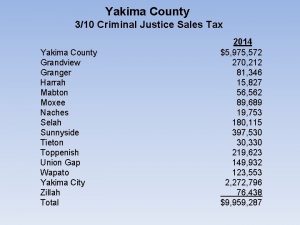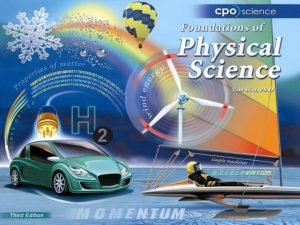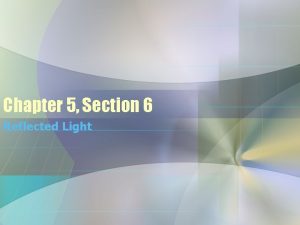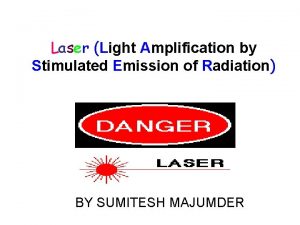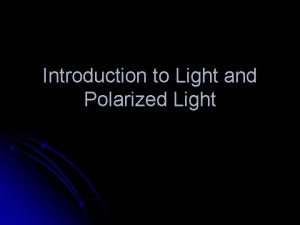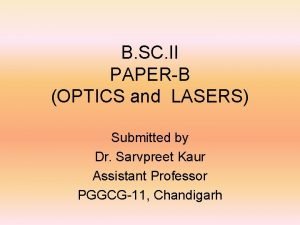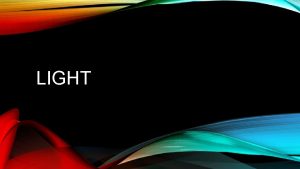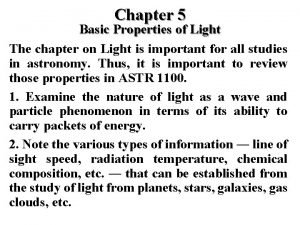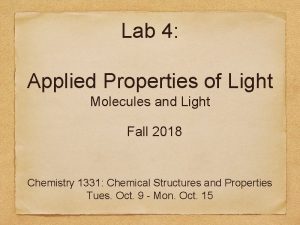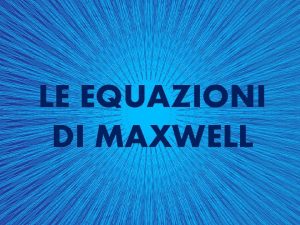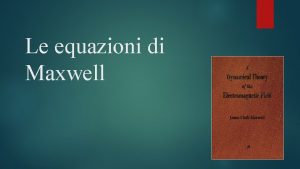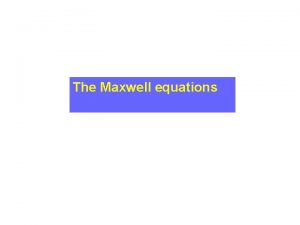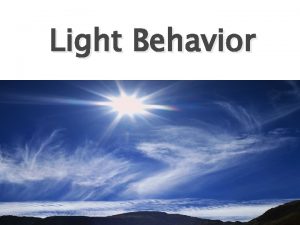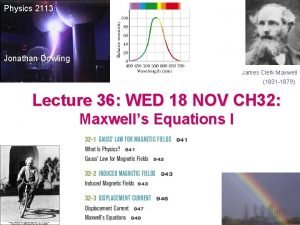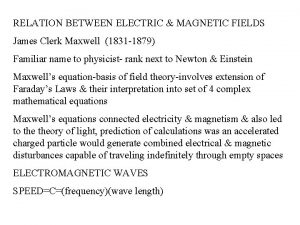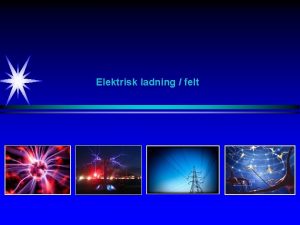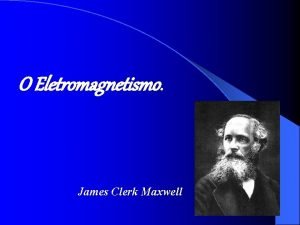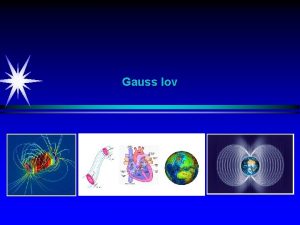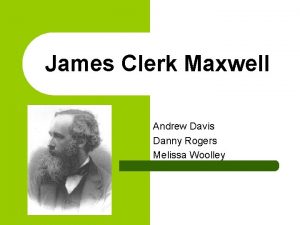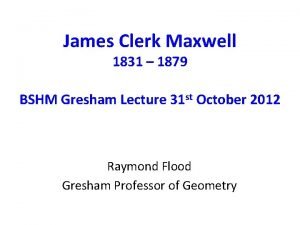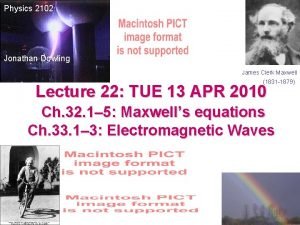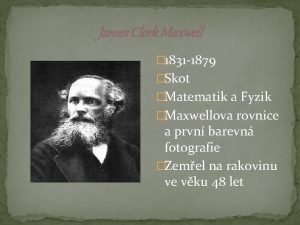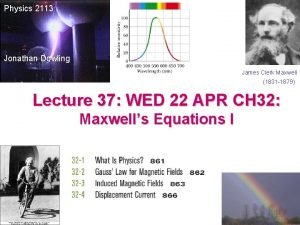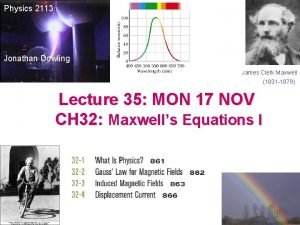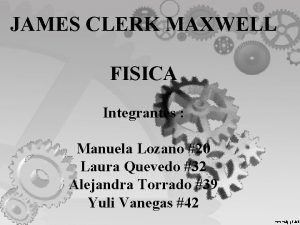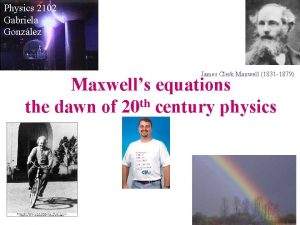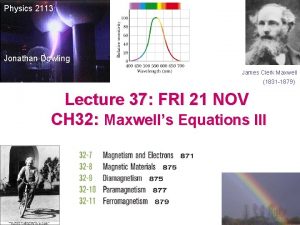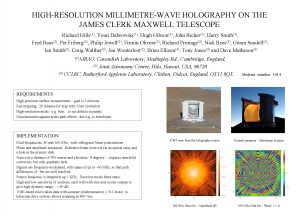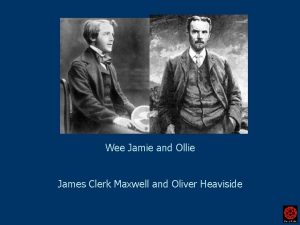Chapter 26 Properties of Light James Clerk Maxwell









































- Slides: 41

Chapter 26 Properties of Light

James Clerk Maxwell discovered that light is composed of a. b. c. d. electromagnetic waves. ultrasonic waves. infrasonic waves. electron vibrations.

James Clerk Maxwell discovered that light is composed of a. b. c. d. electromagnetic waves. ultrasonic waves. infrasonic waves. electron vibrations.

Which of these does NOT belong in the family of electromagnetic waves? a. b. c. d. Light Sound Radio waves X-rays

Which of these does NOT belong in the family of electromagnetic waves? a. b. c. d. Light Sound Radio waves X-rays

The source of electromagnetic waves is vibrating a. b. c. d. electrons. atoms. molecules. energy fields.

The source of electromagnetic waves is vibrating a. b. c. d. electrons. atoms. molecules. energy fields. Comment: It may be said that light is transmitted by vibrating energy fields, but the source of these is vibrating electric charges—most commonly, electrons.

The electromagnetic spectrum is a span of electromagnetic waves ranging from very low to very high frequencies. Which of the following occupies the smallest percentage of the electromagnetic spectrum? a. b. c. d. Radio waves Microwaves Visible light Gamma rays

The electromagnetic spectrum is a span of electromagnetic waves ranging from very low to very high frequencies. Which of the following occupies the smallest percentage of the electromagnetic spectrum? a. b. c. d. Radio waves Microwaves Visible light Gamma rays

Which of these waves has a higher frequency than visible light? a. b. c. d. Radio wave Microwave Infrared wave Ultraviolet wave

Which of these waves has a higher frequency than visible light? a. b. c. d. Radio wave Microwave Infrared wave Ultraviolet wave

Which of these waves is longest in wavelength? a. b. c. d. Radio waves Microwaves Visible light Gamma rays

Which of these waves is longest in wavelength? a. b. c. d. Radio waves Microwaves Visible light Gamma rays Comment: Figure 26. 3 confirms this.

The frequency of a vibrating electron that emits violet light is about a. the same as the frequency that emits other colors of light. b. half the frequency of one that emits red light. c. twice the frequency of one that emits red light. d. 4 times the frequency of one that emits red light.

The frequency of a vibrating electron that emits violet light is about a. the same as the frequency that emits other colors of light. b. half the frequency of one that emits red light. c. twice the frequency of one that emits red light. d. 4 times the frequency of one that emits red light. Comment: Figure 26. 4 confirms this.

Electrons in the atoms that make up glass have a natural frequency in the a. b. c. d. microwave part of the spectrum. infrared part of the spectrum. visible part of the spectrum. ultraviolet part of the spectrum.

Electrons in the atoms that make up glass have a natural frequency in the a. b. c. d. microwave part of the spectrum. infrared part of the spectrum. visible part of the spectrum. ultraviolet part of the spectrum.

Visible light that shines on a pane of transparent glass a. produces a chain of absorptions and reemissions through the glass. b. turns to thermal energy for only a short time. c. turns entirely to thermal energy. d. is mostly reflected.

Visible light that shines on a pane of transparent glass a. produces a chain of absorptions and reemissions through the glass. b. turns to thermal energy for only a short time. c. turns entirely to thermal energy. d. is mostly reflected.

Strictly speaking, the light that shines on glass is a. the very same light that travels through and exits the other side. b. not the same light that travels through and exits the other side. c. absorbed and transformed to internal energy. d. reflected.

Strictly speaking, the light that shines on glass is a. the very same light that travels through and exits the other side. b. not the same light that travels through and exits the other side. c. absorbed and transformed to internal energy. d. reflected. Explanation: Figure 26. 7 illustrates this nicely. The light that leaves is not the same light that begins the process of absorption and re-emission.

The slowing of light in transparent materials has to do with a. b. c. d. the time for absorption and re-emission of light. the density of materials. different frequency ranges in materials. the fundamental difference between light and sound.

The slowing of light in transparent materials has to do with a. b. c. d. the time for absorption and re-emission of light. the density of materials. different frequency ranges in materials. the fundamental difference between light and sound.

Light that does not pass freely opaque materials is a. b. c. d. through converted to internal energy in the material. mainly reflected. mainly refracted. transmitted at a lower frequency.

Light that does not pass freely opaque materials is a. b. c. d. through converted to internal energy in the material. mainly reflected. mainly refracted. transmitted at a lower frequency.

The type of waves that are absorbed by glass are a. b. c. d. infrared but not ultraviolet but not infrared. both infrared and ultraviolet. neither infrared nor ultraviolet.

The type of waves that are absorbed by glass are a. b. c. d. infrared but not ultraviolet but not infrared. both infrared and ultraviolet. neither infrared nor ultraviolet.

The color of light that best passes through violet glass is a. b. c. d. red. green. blue. violet.

The color of light that best passes through violet glass is a. b. c. d. red. green. blue. violet. Comment: If you got this wrong, you may be overly cautious!

The sharper shadow is cast by a small light source that is a. b. c. d. near the object. far from the object. Either of these. None of these.

The sharper shadow is cast by a small light source that is a. b. c. d. near the object. far from the object. Either of these. None of these.

When the shadow of the Moon falls on Earth we have a a. lunar eclipse. b. solar eclipse. c. solar eclipse if it’s daytime and lunar eclipse if it’s nighttime. d. very dangerous event.

When the shadow of the Moon falls on Earth we have a a. lunar eclipse. b. solar eclipse. c. solar eclipse if it’s daytime and lunar eclipse if it’s nighttime. d. very dangerous event. Comment: Although viewing an eclipse is no more dangerous than viewing the Sun high in the sky at any other time, great nonsense is attributed to eclipses. In some societies, people hide from the Sun for days in fear of drastic consequences. Boo for ignorance and hooray for knowledge!

The type of eclipse in view of most people on Earth is a a. b. c. d. solar eclipse. lunar eclipse. Both about as often. Varies with the year.

The type of eclipse in view of most people on Earth is a a. b. c. d. solar eclipse. lunar eclipse. Both about as often. Varies with the year. Explanation: All viewers on the nighttime side of Earth can view the same lunar eclipse, while only those in the relatively small shadow of the Moon can view a solar eclipse.

Total solar eclipses would not be possible if the Sun were appreciably a. b. c. d. larger. closer. Both of these. None of the above.

Total solar eclipses would not be possible if the Sun were appreciably a. b. c. d. larger. closer. Both of these. None of the above. Explanation: If the Sun were closer or larger, it would be bigger in the sky than the Moon. Then the Moon wouldn’t be able to cover it and there’d be no total eclipse. If on the other hand, the Sun were smaller in the sky than the Moon, solar eclipses would be longer in duration.

The retina of the human eye a. is composed of rod and cone-shaped receptors. b. is sensitive to far peripheral objects only if they move. c. does some “thinking” before passing information to the brain. d. All of these.

The retina of the human eye a. is composed of rod and cone-shaped receptors. b. is sensitive to far peripheral objects only if they move. c. does some “thinking” before passing information to the brain. d. All of these.

The main reason we aren’t ordinarily aware of our “blind spot” is that a. b. c. d. each eye fills in the blind spot of the other. we depend more on our other senses anyway. the rods and cones fill them in. we’ve adjusted nicely to maladjustment.

The main reason we aren’t ordinarily aware of our “blind spot” is that a. b. c. d. each eye fills in the blind spot of the other. we depend more on our other senses anyway. the rods and cones fill them in. we’ve adjusted nicely to maladjustment.
 Teoria de james maxwell
Teoria de james maxwell James clerk maxwell
James clerk maxwell Michael faraday and james clerk maxwell
Michael faraday and james clerk maxwell James clerk maxwell
James clerk maxwell How are radio waves produced
How are radio waves produced James clerk maxwell
James clerk maxwell James clerk maxwell
James clerk maxwell Light light light chapter 23
Light light light chapter 23 Light light light chapter 22
Light light light chapter 22 Light light light chapter 22
Light light light chapter 22 Einstein patent clerk
Einstein patent clerk Lydia gardner clerk of court
Lydia gardner clerk of court Ladwp practice test
Ladwp practice test Hays county district clerk
Hays county district clerk Prescription clerk training
Prescription clerk training Select from where and
Select from where and Information desk clerk
Information desk clerk Indirect direct speech exercises
Indirect direct speech exercises Ken burke clerk of the circuit court
Ken burke clerk of the circuit court Lynne finley district clerk
Lynne finley district clerk Yakima sales tax
Yakima sales tax Nh town clerk association
Nh town clerk association Long time goals
Long time goals James russell odom and james clayton lawson
James russell odom and james clayton lawson James russell odom and james clayton lawson
James russell odom and james clayton lawson Extensive properties and intensive properties
Extensive properties and intensive properties Chemical property definition
Chemical property definition 5 properties of light
5 properties of light What are the 7 properties of light
What are the 7 properties of light 5 properties of light
5 properties of light Characteristics of lasers
Characteristics of lasers Stimulated emission
Stimulated emission Polarized light definition
Polarized light definition Properties of laser light
Properties of laser light Light behaves differently as it strikes different objects
Light behaves differently as it strikes different objects Basic properties of light
Basic properties of light 5 properties of light
5 properties of light Ophthalmic medical terminology
Ophthalmic medical terminology Properties of light lab
Properties of light lab Put out the light, and then put out the light
Put out the light, and then put out the light Membrane bound organelles
Membrane bound organelles The bouncing off of light
The bouncing off of light
